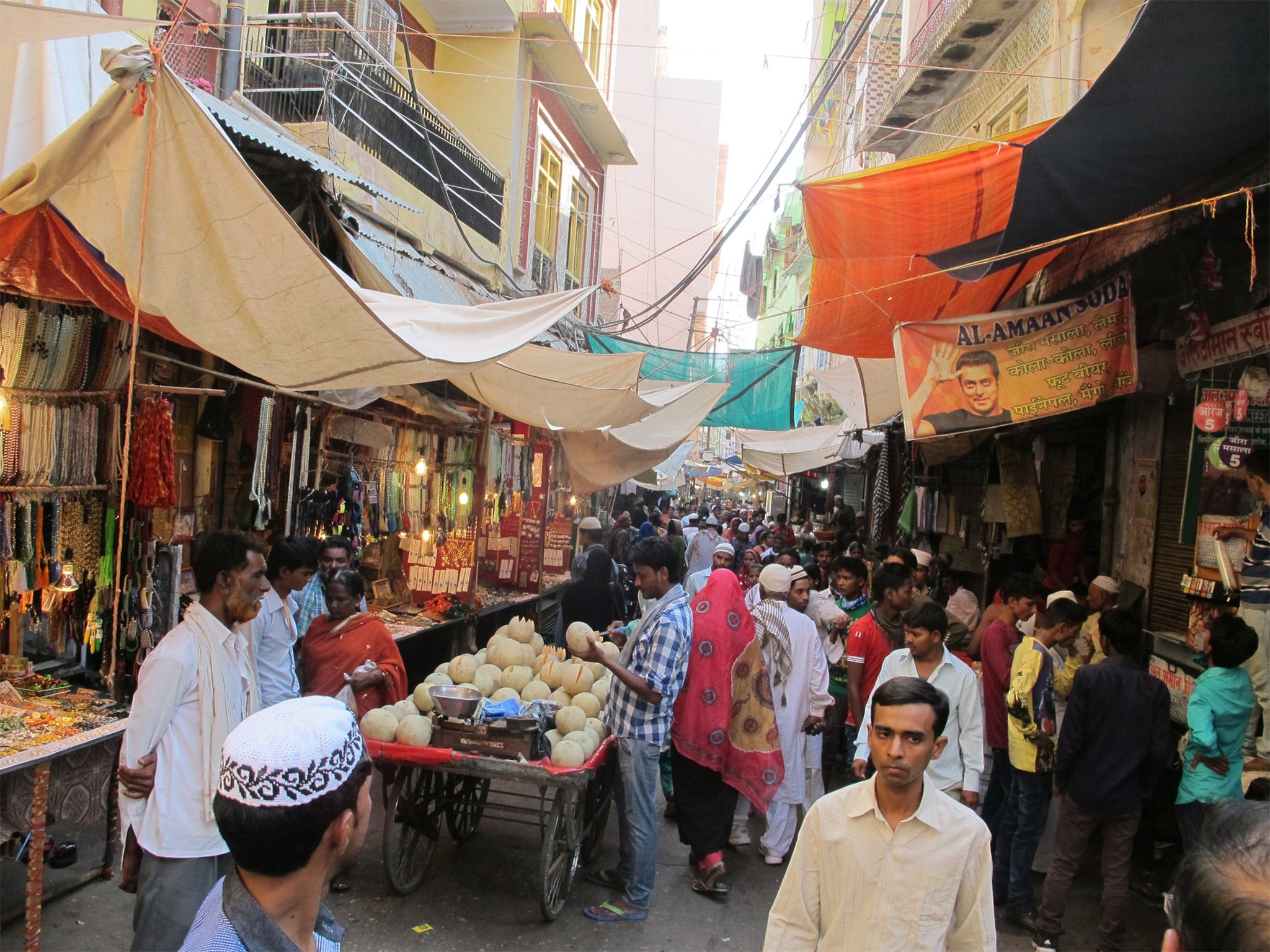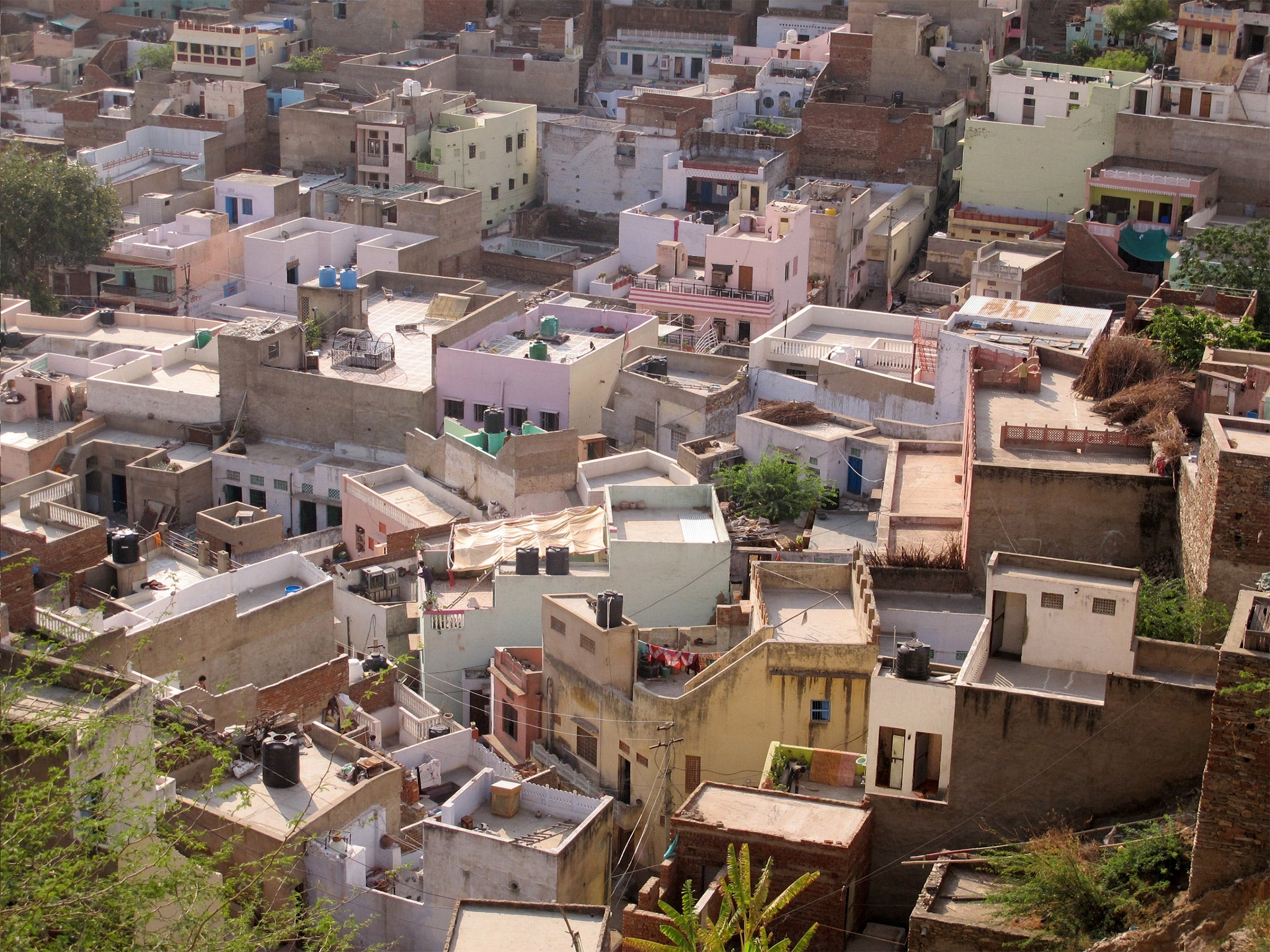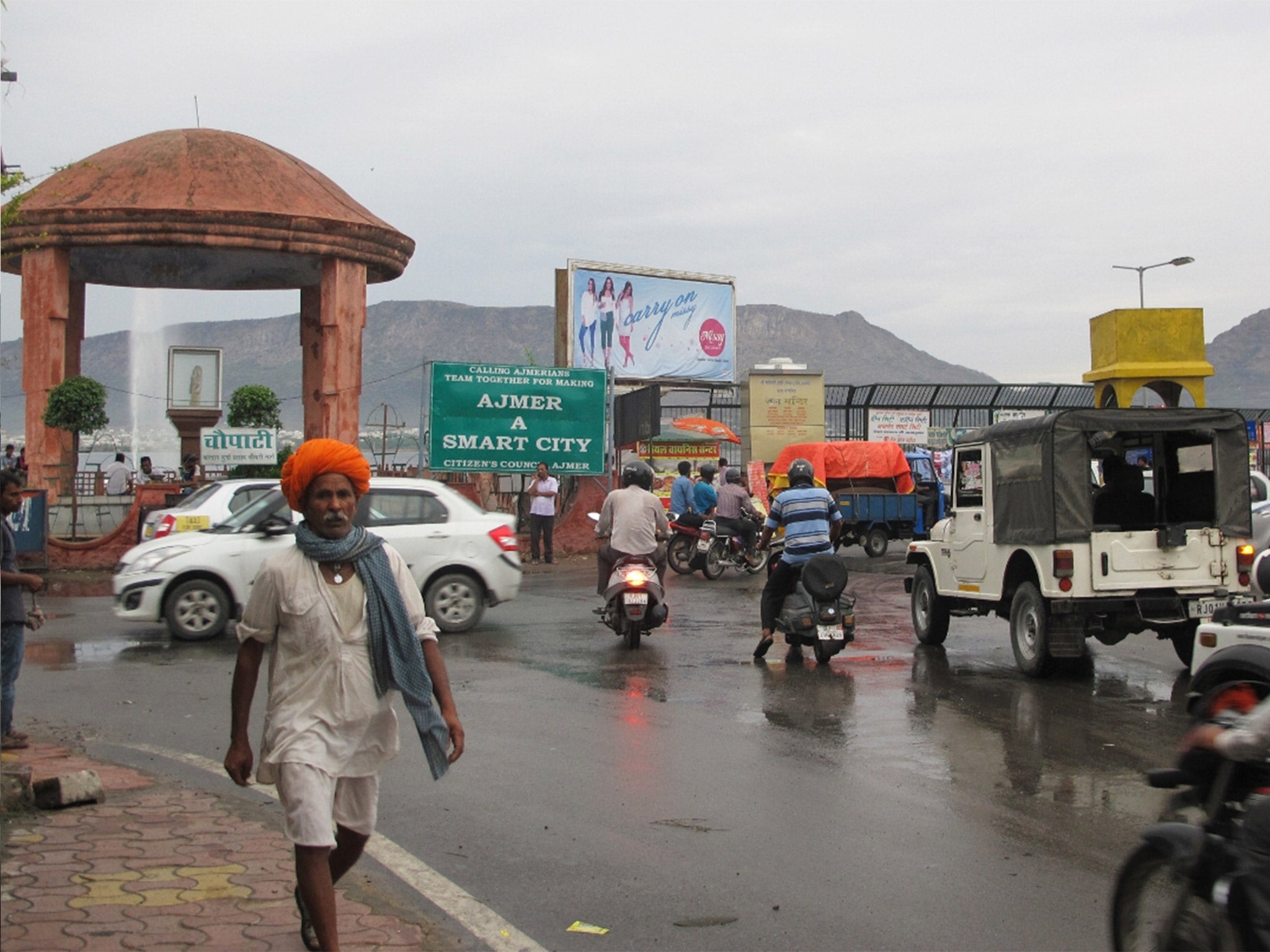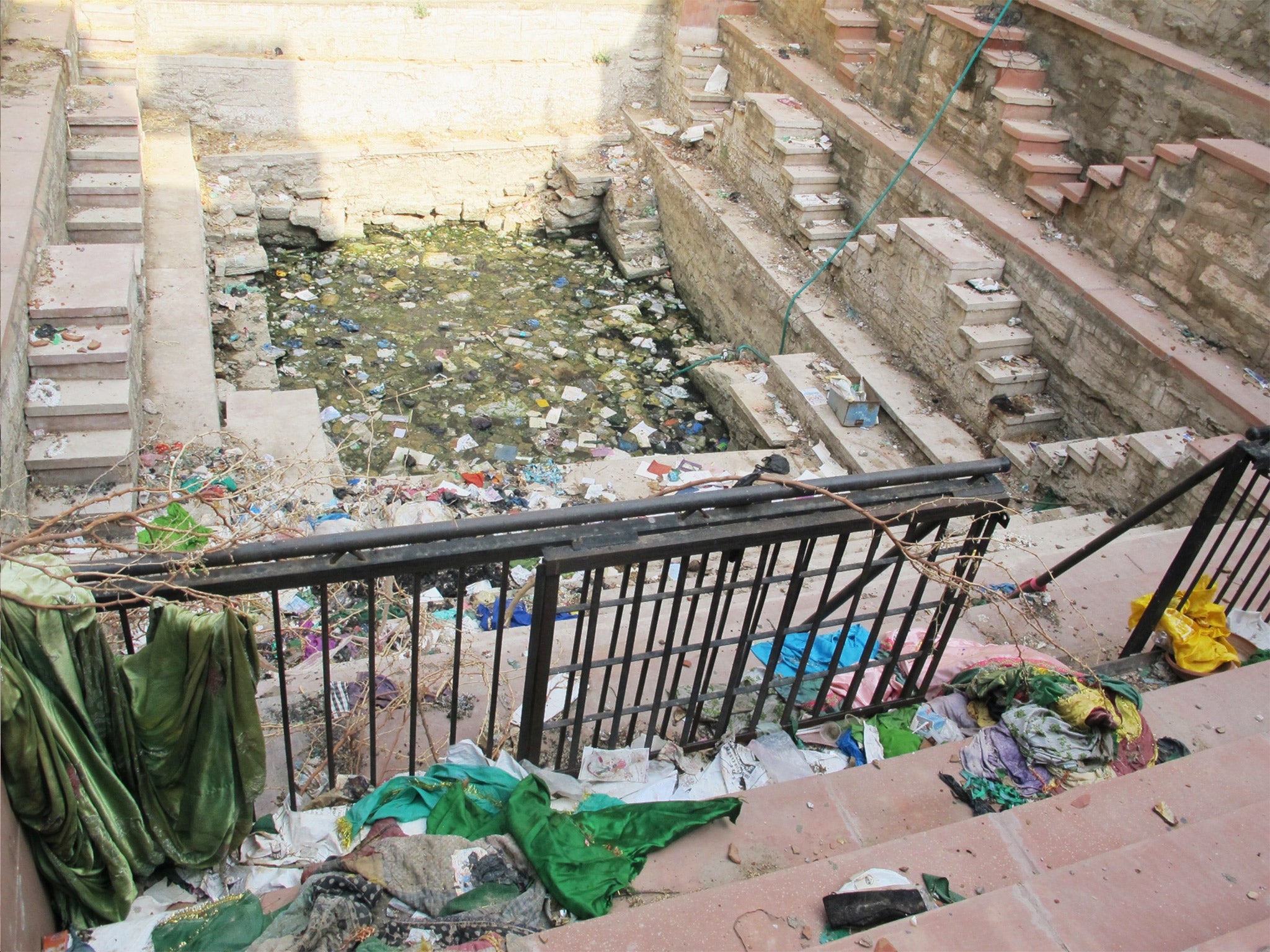Ajmer: The ancient Indian metropolis chosen to be a 'smart city' where residents would just be happy to have power and running water
The government has launched an ambitious plan to transform 100 of its crumbling cities

Your support helps us to tell the story
From reproductive rights to climate change to Big Tech, The Independent is on the ground when the story is developing. Whether it's investigating the financials of Elon Musk's pro-Trump PAC or producing our latest documentary, 'The A Word', which shines a light on the American women fighting for reproductive rights, we know how important it is to parse out the facts from the messaging.
At such a critical moment in US history, we need reporters on the ground. Your donation allows us to keep sending journalists to speak to both sides of the story.
The Independent is trusted by Americans across the entire political spectrum. And unlike many other quality news outlets, we choose not to lock Americans out of our reporting and analysis with paywalls. We believe quality journalism should be available to everyone, paid for by those who can afford it.
Your support makes all the difference.Ajmer’s famous 13th-century Sufi shrine draws millions of pilgrims from around the world every year. The city recently launched a new website called “Amazing Ajmer”. But life in this ancient city is anything but amazing.
Running water is available for just two hours every two days. Only 130 of 125,000 homes in the city in northern India are connected to the sewage system. Dirty water flows in open drains in cramped neighbourhoods. Stepwells and lakes have become garbage dumps. Illegal buildings and slums dot the city of 550,000 residents. And only two traffic lights work.
But soon, Ajmer could be transformed into a 21st-century “smart city” – an urban-planning term for the gleaming metropolises of the future that Prime Minister Narendra Modi wants to create by 2022. These modern marvels would be connected by grids in which water, electricity, waste removal, traffic, hospitals and schools are seamlessly integrated with information technology to run them more efficiently.

The government has set aside $7.5 billion (£4.75bn) to make it happen, and Mr Modi officially launched the programme late last week. But it’s a grand vision that the residents of Ajmer – one of the 100 cities designated for the modernisation – are not quite ready for.
Even as it becomes a buzzword, many people here are unclear about what it means to be a smart city. And others question if Mr Modi’s fascination with smart cities in South Korea, China and Abu Dhabi can be duplicated in India.
The ambitious project also signals a marked shift in Indian politics, analysts say. For decades, the village dominated the country’s political and economic decisions, a stubborn legacy that dates to Mahatma Gandhi’s constant refrain that, “India lives in its villages”. But now the pace of urbanisation is so rapid that policymakers can no longer look away.
More than 350 million Indians live in cities. According to a McKinsey Global Institute report, urban expansion will grow in the next few years “at a speed quite unlike anything India has seen before”.
By 2030, more than 600 million Indians will live in crowded cities crumbling with creaky infrastructure. Mr Modi wants to boost cities as engines of economic growth. By 2030, officials say, 70 per cent of India’s economic output is expected to come from the cities.
“Cities in the past were built on riverbanks. They are now built along highways. But in the future, they will be built based on availability of optical-fibre networks and next-generation infrastructure,” Mr Modi said last year, shortly after taking office.
India’s programme involves radical renovation of deteriorating cities as well as constructing new municipalities from scratch, similar to a Wall Street-like financial hub called the Gujarat International Finance Tec-city in Mr Modi’s home state, where the progress is nowhere near its promised hype.

When Mr Modi and President Obama met in Washington in September, US companies selected three Indian cities, including Ajmer, to become smart cities. Last month, IBM, Oracle and several other companies met officials in Ajmer to discuss using smart technology to solve some of the city’s challenging water, traffic and waste problems.
“While we are trying to bring 21st-century technology, we also need to sort out some 19th-century challenges in Ajmer,” said Mukesh Aghi, president of the US-India Business Council, which organised the meeting. “Basic services like sanitation, health, roads and electricity have not kept up with the pace of growth in these old cities. We can leverage smart technology to leapfrog some of these problems.” Mr Aghi said that the US companies are considering a pilot project to install smart electricity meters that will help consumers track consumption and promote conservation on their own.
Ajmer’s residents have already posted a billboard in the heart of town declaring themselves a smart city. But many wonder whether the initiative is just an urban fantasy of technology and real estate companies that is being imposed on Ajmer.
“Can we first work toward becoming a functioning city before aspiring to be a smart city? We lack even the basic services a city should typically provide,” said Suresh Mathur, a retired schoolteacher who runs a city cleanliness drive called, My Clean School.

Other critics have dismissed Mr Modi’s smart-cities plan as a 21st-century urban utopia, as a distant Neverland and Orwellian. “The Western definition of the smart city is spineless, if not altogether redundant in India – a mere glossing over of civic services and infrastructure,” Gautam Bhatia, an architect and author on urban design, wrote in The Hindu newspaper.
Some worry about damaging or destroying Ajmer’s famous cultural heritage.
“We can’t import a first-world concept of a smart city and plant it here. It has to be culturally appropriate,” said Onkar Singh Lakhawat, chairman of Heritage Preservation and Promotion Authority of Rajasthan.
Officials have held 22 meetings with residents in the past five months to convince them of the merits of the smart city plan. “Before you take part in the Olympics, you engage in warm-up exercises, build your stamina, physical fitness and change your attitude,” said Dharmendra Bhatnagar, divisional commissioner. As first steps, his office is arranging a flower show and a photography contest.
The big challenge, Aghi said, is figuring out where the funding for the program will come from. Most city corporations in India are severely cash-strapped. Modi wants Indian and foreign companies to invest in the program but there is no estimate yet.
One idea is that private companies charge residents a fee to recover their investment. But that could be problematic. Last year, when a private company in Ajmer received a contract to collect and recycle rubbish, residents protested in the streets and refused to pay. “There is a mindset among people that the government should give everything free,” said the city’s mayor, Kamal Bakolia.
In the cramped and labyrinthine lanes leading to Ajmer’s Sufi shrine, there is plenty of chatter and jokes about Ajmer’s new designation. Earlier this year, before Ajmer was chosen for smart-city status, Mr Modi had also included it in a list of 12 “heritage cities” he planned to develop. “Real estate prices have shot up since all this talk of smart city began,” said Syed Munawwar Hussain, the shrine custodian. “We are a world-renowned city but we are still waiting to become a world-class city.”
© The Washington Post
Join our commenting forum
Join thought-provoking conversations, follow other Independent readers and see their replies
Comments